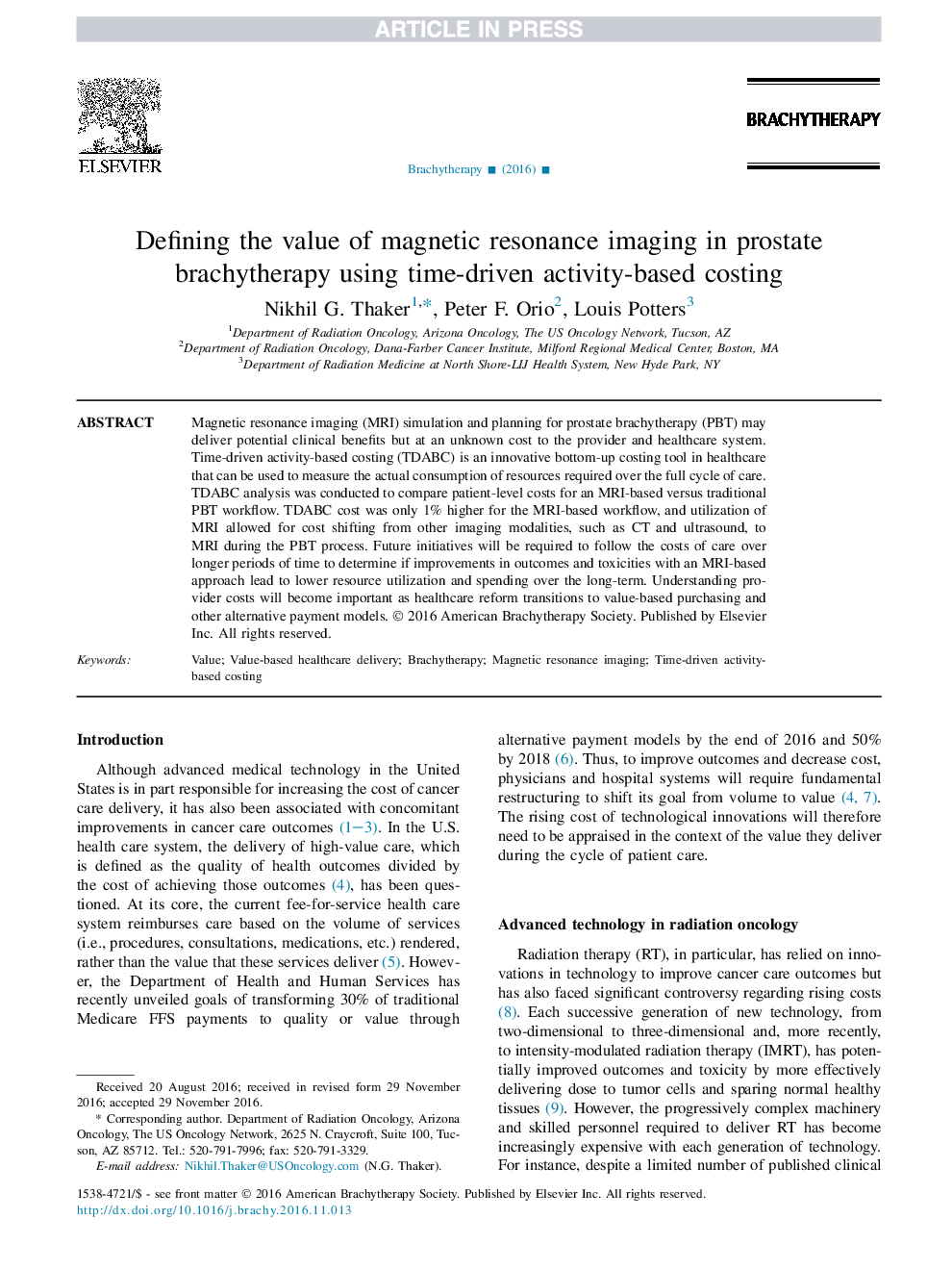| Article ID | Journal | Published Year | Pages | File Type |
|---|---|---|---|---|
| 5696990 | Brachytherapy | 2017 | 7 Pages |
Abstract
Magnetic resonance imaging (MRI) simulation and planning for prostate brachytherapy (PBT) may deliver potential clinical benefits but at an unknown cost to the provider and healthcare system. Time-driven activity-based costing (TDABC) is an innovative bottom-up costing tool in healthcare that can be used to measure the actual consumption of resources required over the full cycle of care. TDABC analysis was conducted to compare patient-level costs for an MRI-based versus traditional PBT workflow. TDABC cost was only 1% higher for the MRI-based workflow, and utilization of MRI allowed for cost shifting from other imaging modalities, such as CT and ultrasound, to MRI during the PBT process. Future initiatives will be required to follow the costs of care over longer periods of time to determine if improvements in outcomes and toxicities with an MRI-based approach lead to lower resource utilization and spending over the long-term. Understanding provider costs will become important as healthcare reform transitions to value-based purchasing and other alternative payment models.
Related Topics
Health Sciences
Medicine and Dentistry
Oncology
Authors
Nikhil G. Thaker, Peter F. Orio, Louis Potters,
